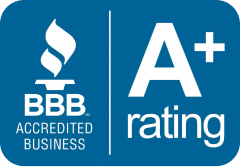What is Medicare open enrollment?
Each year in the fall, Medicare enrollees have the opportunity to reevaluate their current Medicare coverage, whether it be Original Medicare with supplemental drug coverage or Medicare Advantage, and make changes if they so choose. This enrollment window is known as Medicare open enrollment, Medicare coordinated election period, or Medicare annual election period.
The Medicare Annual Election Period is covered thoroughly here. We’ve covered everything you need to know to enrol in Medicare or make changes to your current plan, and then some.
When is Medicare open enrollment?
Medicare enrollment began on October 15 and ended on December 7 annually. People in areas where FEMA has declared an emergency or major disaster may be eligible for an extended enrollment period.
What plan changes can I make during the Medicare open enrollment period?
If you are currently enrolled in Medicare coverage, you can make the following changes during the Medicare open enrollment period:
- If you are enrolled in both Medicare Part A and Part B and you live in the Medicare Advantage plan’s service area, you can switch from Original Medicare to Medicare Advantage.
- Replace Medicare Advantage with Original Medicare (plus a Medicare Part D plan and, possibly, a Medigap plan, though the latter may require medical underwriting depending on the individual’s state and circumstances).
- Make a change to your Medicare Advantage plan.
- Change prescription drug plans under Medicare Part D.
- If you didn’t sign up for a Medicare Part D plan when you became eligible for Medicare, now is the time to do so. There may be a late-enrollment fee if you haven’t kept up other insurance that’s as good as Medicare.
If I change my coverage at the start of the AEP, can I change my mind before the December 7 deadline?
Yes. In the event that you change your mind about your AEP plan selection, you can do so at any time during the AEP. The number of plan modifications allowed during the AEP is unlimited.
The January 1st plan selection will be the one you made last.
If I make a mistake when I change my coverage during the AEP, what can I do to fix it?
If you change your mind about your AEP choice at any time before the December 7 deadline, the new plan will take effect on January 1 of the following year.
If you enrolled in a Medicare Advantage plan during the AEP but later changed your mind, you can change plans during the Medicare Advantage Open Enrollment Period (MAOEP), or switch to Original Medicare and a Part D plan.
Perhaps the expensive medication you need is not covered by your Advantage plan, or perhaps the hospital closest to you is not part of the network. The premium or coverage details of your current Advantage plan may have changed in January, but you may not have noticed. For whatever reason, the MAOEP provides Medicare Advantage recipients with a fresh start every year.
The MAOEP period is from January 1st to March 31st.
After the AEP has ended, your options for changing to a different Part D plan that better suits your needs will be more limited. When it comes to modifying an individual Part D plan, there is nothing better than the MAOEP. Usually, you can only make changes to your plan during the fall annual election period (AEP).
Call 1-800-MEDICARE if you think you were given false or misleading information that influenced your Medicare plan selection. The call centre agent will evaluate your situation and determine whether or not you qualify for a plan change at that time.
Who’s eligible to make coverage changes during Medicare open enrollment?
Anybody who is currently enrolled in either Original Medicare or Medicare Advantage can switch plans during this time.
However, Medigap plans are not included in the annual Medicare open enrollment period, and in most states, they are only guaranteed-issue at the time of initial enrollment and during certain special enrollment periods. To be clear, you cannot sign up for a new Medigap policy on a guaranteed-issue basis during the annual Medicare open enrollment period. Applying for a new Medigap policy during this time period is perfectly acceptable, as it is at any other time of year. Once the initial Medigap enrollment period of six months has passed, however, the Medigap insurance company will use medical underwriting to determine your eligibility and premium.
(It is important to keep in mind that the rules in eleven states permit at least some guaranteed-issue access to new Medigap plans, although in most cases this is restricted to switching from one Medigap plan to another with equal or fewer benefits.)
And you can’t use the AEP to join Medicare Part B if you didn’t sign up when you were first eligible. The Medicare open enrollment period, which runs from January 1 through March 31, will be used instead. Those who didn’t sign up for Medicare Part A when they were first eligible but are now required to pay a premium can do so during the general enrollment period. (Most individuals will not be required to contribute to the cost of Part A.)
Can I sign up for Medigap during the AEP?
A Medigap (Medicare Supplement) plan application can be submitted at any time of year, not just during the Annual Enrollment Period (AEP). However, the federal government does not mandate an annual enrollment period for Medigap plans like they do for Part D and Medicare Advantage.
However, the Medigap insurance company is more likely to use medical underwriting to determine your eligibility and premium if you apply for coverage after the initial six-month enrollment period has ended.
Eleven states provide a period each year during which current Medigap enrollees can switch to another plan without having to undergo medical underwriting, and in some cases, new Medigap enrollees also have this option.
How are plan costs changing for 2023 Medicare coverage?
Here’s a rundown of how Medicare rates, premiums, and patient contributions have changed recently. To be more general, though:
- The Inflation Reduction Act will ensure that Part D enrollees are no longer required to pay for recommended vaccines and set the price of insulin products at $35 per month by 2023.
- Medicare Part B premiums and deductibles will fall in 2023 for the first time in over a decade.
- In 2023, the Part A premium, deductible, and coinsurance will all go up for those who must pay them.
- The average cost of Medicare Supplement Plan D insurance is projected to go down in 2023.
- The threshold for having to pay Medicare’s IRMAA (high-income surcharge) for Part D and Part B will increase significantly, but the high-income Part B premiums will decrease, just like standard Part B premiums.
- For Medicare Advantage plans, the out-of-pocket maximum for in-network services will increase to $8,300 from the current $6,700. While this is the case, most plans will still have out-of-pocket maximums that are significantly lower.
How many people change their coverage during the AEP?
The Annual Enrollment Period (AEP) is Medicare’s best time to switch health plans, but few people actually do so. According to research by KFF, between 10% and 13% of Medicare Part D recipients switched plans annually over the course of a decade. Even lower, between 6% and 11%, was the range for Medicare Advantage recipients.
During the most recent open enrollment period, 7 out of 10 beneficiaries did not shop around for better coverage. It’s possible that your current plan will still be the best choice for the upcoming year. The majority of Medicare recipients, however, are not engaging in active comparison of the options available to them.
What will happen if I don’t change my Medicare coverage during the annual election period?
Your current plan will renew for the year 2023 unless you make other arrangements. Costs and benefits may shift as a result of this, though. It is possible that your plan’s drug formulary (covered drug list) or provider network has undergone changes, rendering certain medications or medical professionals ineligible for reimbursement. Alterations to the plan’s premium and/or cost-sharing structure are also possible.
That’s why it’s vital that you weigh your options carefully every autumn. You should research how your current plan and any alternatives in your area will handle the cost of visits to your doctor and prescriptions in the coming year.
You will be unable to modify your stand-alone Part D plan until the following annual election period begins. The Medicare Advantage Open Enrollment Period (MAOEP), which is available to those with Medicare Advantage plans, will continue to be accessible to beneficiaries throughout the months of January, February, and March. During this time frame, you may make one (1) change to your current plan.
However, please be aware that the new plan selection wouldn’t go into effect until at least February (and as late as April, depending on when you make the plan selection). This means that no matter how much you had already spent on out-of-pocket expenses for the year under your old plan, they would be wiped out when your new plan took effect.
So, if you think you might want to switch plans, it’s best to make your decision before the end of the annual election period (by December 7), so that your new coverage can begin on January 1 and last throughout the year.








